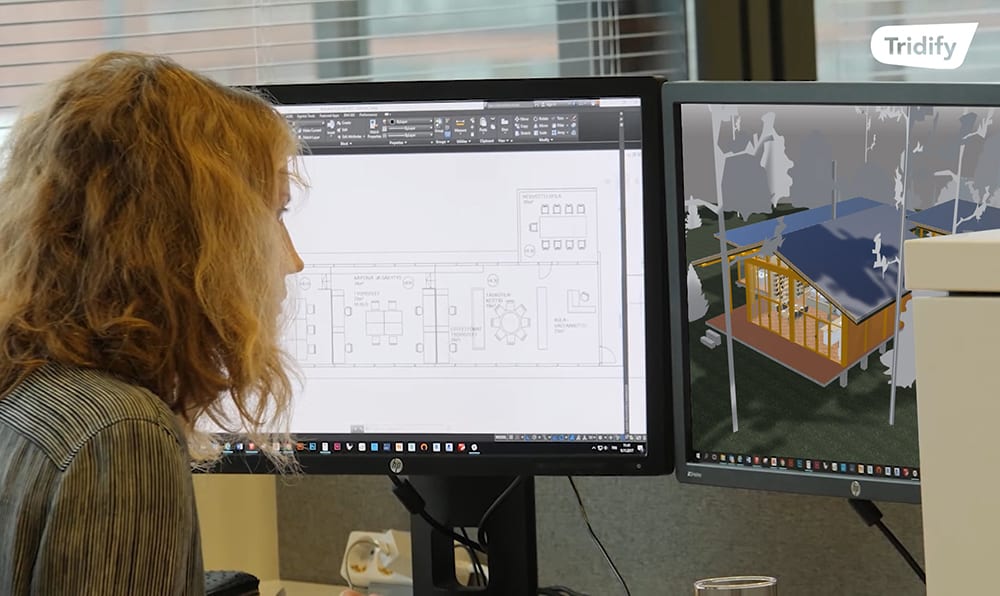Tridify has announced a new option to its BIM to XR processing service, which makes BIM models instantly available online and sharable via a web link.
Using BIMs that have been exported to an IFC format, Tridify’s new Web VR option automatically generates an interactive 3D model and makes it accessible via a URL, ready to be embedded on a web page, sent via email or text and viewable on a mobile phone.
Feedback from architects revealed to Tridify how valuable it is to be able to send a link to a 3D model instead of sending files. With Tridify, users can now easily publish/unpublish their models and manage their visibility, giving greater control over how the models are used. Models cannot be copied and intellectual property rights are better protected.
Targeted at the architecture, construction and property sectors and anyone working with BIM models, the new option creates many opportunities for non-technical audiences, making 3D models easier to share internally, externally, with customers or consumers, on mobiles, tablets, desktops or VR headsets.
Users simply upload an IFC file into Tridify and click “publish” to create the model ready to view online, with no additional applications or programming skills required.

Tridify’s new Web VR option automatically generates an interactive 3D model
“Our new Web VR option solves a problem that the industry has struggled with for many years,” said Alexander Le Bell, Tridify CEO. “By making BIM models instantly available and viewable in any browser, technical barriers are removed, they become a new commodity and are propelled into the mainstream. This will help to dramatically improve communication and collaboration workflows for architect, construction and property companies.”
“3D models can now be created from a BIM model in less than two minutes and shared with a global audience via WhatsApp, for example,” Le Bell continued.
The new service starts from $20 (£16) a month, which is enough to publish models of several small projects or a model of one medium size project, said Le Bell.
Tridify will also be providing various web viewers to enable a model to be shown in different ways to different user groups, depending on the end use and skill level.
Sample demo and model of a summer house, created using the new option available here.
Early adopters
WSP, the multidisciplinary design company, is an early user of the new service. Part of the global WSP group, the firm offers strategic advice to the construction and infrastructure sector. “WSP uses the Tridify Web VR option for fast and effective VR creation on early design stages to ease the communication process with our clients,” said Roope Syvälahti, project manager at WSP Finland Oy.
“This innovation also opens up a great variety of possibilities for further development of VR models as BIM communication tools, also containing BIM data and not only being a pure visualisation,” added Syvälahti.
Stefan Ahlman Architects in Finland, who work with SATO among other clients, have been testing the new Tridify Web VR option, as CEO and partner, Marcus Ahlman explains: “The Tridify service works well as a quick way of presenting models to clients and members of design teams, as it only needs minimal time and preparation. In our office, the short conversion time makes it much easier to use 3D models during meetings, as it’s easier to switch between different versions.
“Alternative methods for presenting 3D models need more work and can’t be used as easily ad hoc as Tridify. During the design process Tridify can help visualise problems and solutions that otherwise lay ‘hidden’ in the model.”
Stefan Ahlman Architects is based in Helsinki with projects ranging from large developments and city planning projects to housing projects and public buildings.











